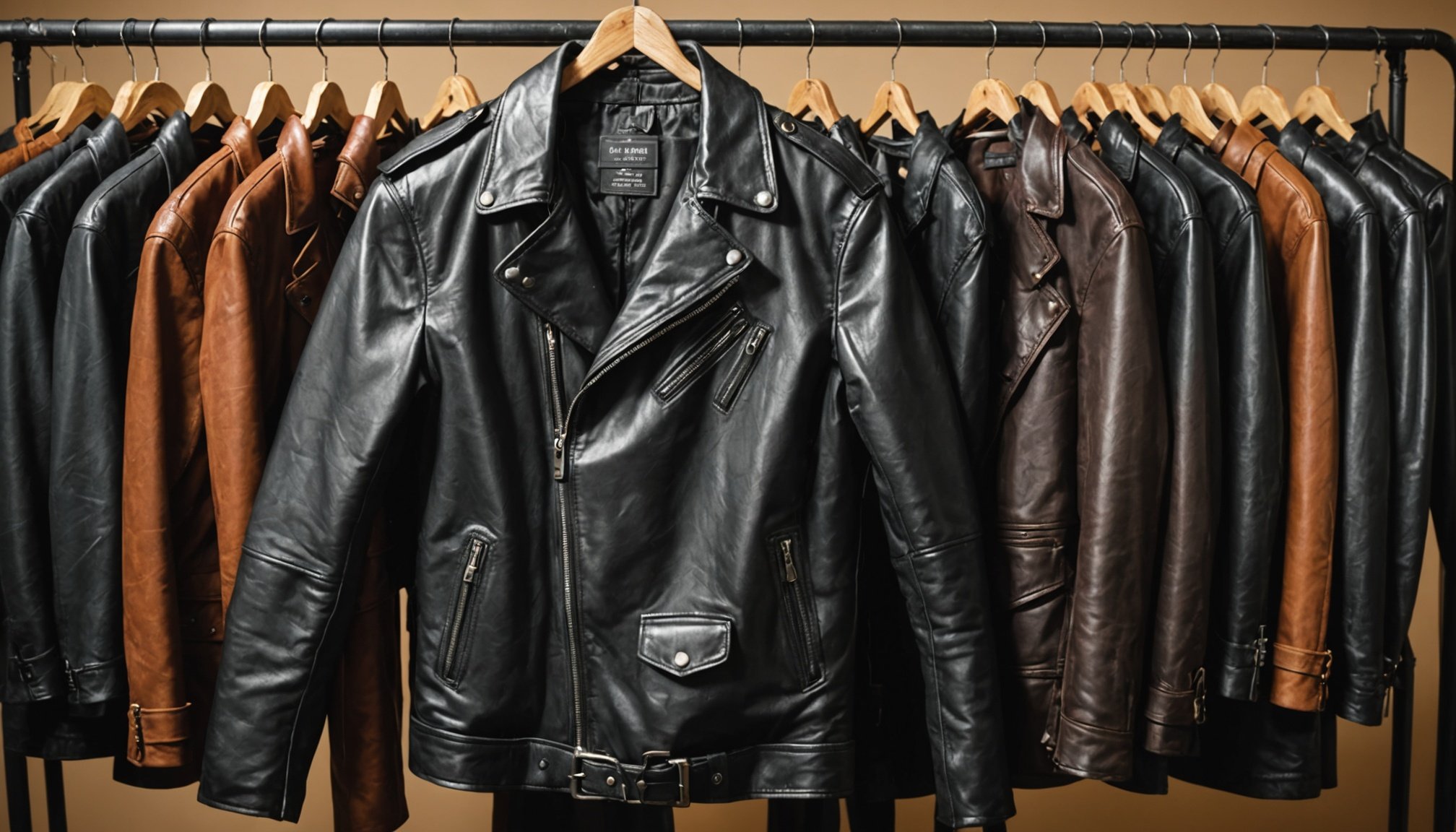Importance of Leather Care in the UK Climate
The UK climate, known for its unpredictable weather, poses unique challenges for leather care. From persistent dampness to frequent temperature changes, these conditions can significantly impact leather’s durability and appearance. Moisture accumulation can lead to mould growth, while constant exposure to fluctuating temperatures can cause leather to crack or become brittle.
Leather garments and products, if not properly maintained, may suffer reduced longevity in this climate. This makes consistent care vital. Routine cleaning and conditioning form the basis of effective leather care. By applying a high-quality leather conditioner, one can enhance the leather’s resistance to moisture while maintaining its suppleness.
Additional reading : Top Ethical Fashion Brands Captivating UK Millennials: A Comprehensive Guide
Common challenges associated with UK weather include dealing with rain and humidity. Such conditions demand regular attention to keep the leather in optimal condition. For instance, implementing measures like using water-repellent sprays can protect garments from water damage. Furthermore, regularly airing leather items can prevent internal water build-up and mitigate mould risks.
Overall, staying proactive in leather maintenance not only helps in preserving the quality of the material but also extends its lifespan. Ensuring an understanding and application of proper care techniques is essential to navigating the vagaries of the UK climate successfully.
Also to see : Mastering the Art of Parka Styling: Achieve a Chic and Practical Winter Ensemble
Cleaning Leather Clothing
Maintaining the longevity of leather garments requires diligent care and the right cleaning approach. Proper maintenance starts with selecting suitable cleaning products and adhering to a sustainable cleaning process.
Recommended Cleaning Products
When cleaning leather, it’s crucial to opt for products formulated specifically for leather maintenance. These specialised cleaners and conditioners are designed to preserve the natural oils and finish of the leather, preventing wear and tear. Avoid using household detergents that can strip the leather of its protective layer.
Step-by-Step Cleaning Process
To begin the cleaning leather process, always test the cleaner on a small, inconspicuous area. Once confirmed safe, gently apply the product with a soft cloth, working in circular motions. Ensure even coverage and avoid excessive moisture that could damage the leather garments. Finish by using a leather conditioner to restore suppleness.
Frequency of Cleaning
Regular, moderate cleaning significantly extends the life of leather garments. Depending on wear and exposure, cleaning should be done every three to six months. This interval ensures debris and oils are removed without over-cleaning, which could weaken the leather. Consistent maintenance prevents buildup and protects your investment, making it a practical element of any leather owner’s routine.
Conditioning Leather
Maintaining the longevity of leather items is a task that requires regular attention, with conditioning leather playing a pivotal role. Without a doubt, a well-applied leather moisturizer can rejuvenate the material, enhancing its durability and appearance. But how exactly does conditioning leather contribute to its upkeep?
Conditioning leather regularly ensures that it remains soft, supple, and resistant to cracking. The natural oils and waxes in conditioners replenish lost moisture, which is essential for preserving the leather’s integrity. Regular use of a quality leather moisturizer not only extends the life of your leather products but also maintains their aesthetic appeal.
When it comes to choosing the right conditioner, it’s essential to select a product suited to the unique demands of UK climates. In the UK, specific conditions like higher moisture levels call for conditioners that can manage humidity effectively. Cream-based conditioners often provide the best moisture balance for leather items in such environments.
Recognizing the signs that your leather needs conditioning is straightforward. Look for dryness, stiffness, and visible cracks. These symptoms suggest it’s time to apply a leather moisturizer. Regular observation ensures timely treatments, keeping leather items in prime condition. By understanding these nuances, users can effectively maintain their leather goods, maximizing both their performance and longevity.
Waterproofing Leather
Waterproofing leather is essential to maintaining the integrity and appearance of your products, especially given the challenging UK weather conditions. Ensuring your leather goods are properly treated for protection can dramatically extend their lifespan, protecting against rain, snow, and humidity.
Types of Waterproofing Products
Various products cater to different leather needs. Spray-on waterproofing solutions are popular for their ease of use and versatility, suitable for both clothing and accessories. Meanwhile, wax-based treatments are more traditional, providing a robust barrier against moisture. However, wax may alter the leather’s appearance slightly, making it appear darker. Another option is cream waterproofers, which nourish the leather while offering protection, ideal for maintaining the leather’s natural appearance.
Application Techniques
Proper application techniques are crucial to ensure the effectiveness of any waterproofing treatment. Always begin with clean, dry leather to avoid trapping dirt or stains. For spray-on solutions, hold the can about 15 cm away from the surface and apply evenly. With wax or cream, use a soft cloth to spread a thin, even layer, ensuring full coverage.
Frequency of Treatment
Reapplication frequency depends on usage and exposure to elements. Regularly used items might require waterproofing every three months, while less frequently used items can be treated every six months. This routine helps maintain optimal protection against harsh weather conditions.
Storing Leather Clothing
Leather is a unique and delicate material requiring specific care to maintain its condition. Understanding best practices for storing leather garments is essential to prolong their lifespan. Firstly, ensure that leather clothing is cleaned and treated before storage. Dust and oils can degrade the material over time, so use a leather cleaner to remove any surface grime.
One of the critical factors in garment preservation is maintaining a stable environment. Climate-controlled environments are vital for preventing the leather from drying out or developing mould. Aim for a location with consistent temperature and humidity—ideally between 50-70°F and 45-50% humidity.
Avoid common mistakes by steering clear of plastic covers, as these can trap moisture and lead to mildew. Instead, opt for breathable fabric covers and allow the leather to ‘breathe’. When hanging leather garments, use padded or wide hangers to preserve their shape and prevent damage.
Proper leather storage involves several key considerations to keep your items in excellent condition. By prioritising a stable climate and avoiding pitfalls such as plastic coverings, you can ensure your leather clothing stays vibrant and durable for years.
Seasonal Care Tips
Caring for leather in the UK varies with each season, necessitating specific strategies to maintain its quality across differing climates. Paying attention to seasonal leather care ensures your items remain pristine and durable.
Summer Care Considerations
In warm and humid conditions, leather is prone to drying and cracking. To prevent this, it is crucial to keep leather properly moisturised. Apply a light conditioner regularly to maintain its softness. Avoid direct sunlight, as this can fade colour and cause permanent damage. Using breathable fabric covers for protection when not in use can be beneficial. These tips can help in leather maintenance during hotter months.
Winter Care Strategies
Winter poses challenges with increased moisture and cold. To protect leather during this time, ensure it is waterproofed. A quality waterproof spray creates a barrier against snow and rain, reducing the risk of watermarks and stains. Regular cleaning with a soft cloth helps remove road salt residues, which could be abrasive.
Transitioning Between Seasons
Transition periods between seasons are vital for leather care. Shifting from winter to warmer months, gradually reduce the use of heavy conditioners as humidity rises. Embrace lighter maintenance routines, ensuring that leather remains supple. These transition steps are crucial for maintaining leather’s appearance and longevity year-round.
Common Mistakes in Leather Care
Understanding how to preserve leather involves recognizing the pitfalls often encountered in its maintenance. Many people commit leather care mistakes like using unsuitable cleaning agents or neglecting regular conditioning. These errors can compromise the durability and appearance of leather goods.
Frequent Errors in Leather Maintenance
A common oversight is using harsh chemicals, assuming they will clean more effectively. Unfortunately, this can strip the leather’s natural oils, accelerating wear. Another widespread mistake is neglecting to provide adequate protection against moisture. Exposure without a protective layer can lead to water stains and irreversible damage over time.
Impacts of Neglecting Specific Care Routines
Failure to regularly condition leather items can result in drying out and cracking, diminishing both functionality and aesthetics. Conditioning locks in essential oils, maintaining the leather’s softness and flexibility.
Avoiding Common Pitfalls
To ensure leather longevity, adhere to these best practices:
- Choose appropriate cleaning products developed for leather specifically, avoiding household cleaners.
- Consistently condition leather goods to replenish stripped oils.
- Invest in water-repellent treatments for items frequently exposed to moisture.
These solutions promote leather preservation, ensuring items remain durable and attractive in the long run. Consistent care routines are integral to maintaining leather quality.
Product Recommendations for Leather Care
When it comes to maintaining the beauty and durability of leather products, selecting the right leather care products is essential. Having a well-rounded collection of cleaning products, conditioners, and waterproofing sprays ensures comprehensive leather maintenance.
Best Cleaning Products
For effective solutions in leather cleaning, it is crucial to use products that not only clean but also protect the leather surface. Brands like Lexol and Chamberlain’s Leather Milk are known for their gentle, pH-balanced formulas that effectively remove dirt and grime without causing damage. These recommended brands are praised for their ability to maintain the leather’s natural shine while preventing future dirt buildup.
Top Conditioners
Conditioning is key to preserving leather’s suppleness. Reputable brands, such as Bickmore and Leather Honey, offer conditioners that deeply penetrate the leather, replenishing essential oils. Regular use of these conditioners can restore the softness and extend the life of your leather goods.
Recommended Waterproofing Sprays
Waterproofing sprays, like Scotchgard and Nikwax, are considered essential products. They form a protective barrier against moisture while keeping the leather breathable. User reviews highlight their effectiveness in preventing water stains and maintaining the leather’s original appearance.
Selecting the right leather care products from these trusted brands ensures your leather items remain in pristine condition for years.











